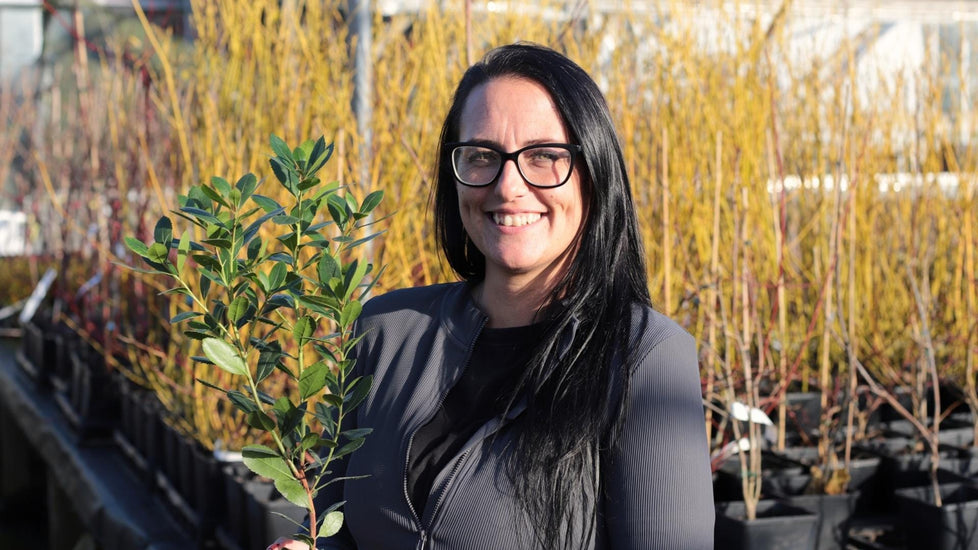Quince Trees
Sort and filter
South Downs National Park
Meet Danielle
110 years' expertise free with every tree
Danielle's nursery has been growing trees in the South Downs National Park for over a century, and it shows. Dug up and sent straight to your garden at between 18-36 months old, their quality rootstocks, expert pruning and natural pest control mean that these traditionally field-grown trees are the hardiest you can get.
Quince Trees FAQs
What is a quince tree?
A quince tree is similar to other pome fruits such as apples and pears, but produces quinces - an aromatic yellow fruit that looks similar to a pear but larger and more rounded.
When is the best time to plant a quince tree in the UK?
Bare root quince trees should be planted between November and April, when they’re in their dormant phase. Potted quinces can be planted at any time of year, as long as the ground isn’t waterlogged or frozen over. Early spring is the best time, as this allows the tree to establish a good root system before any inclement weather sets in.
What type of soil do quince trees prefer?
Quince trees are fine in most soil types, but they prefer well drained, fertile soil with a pH level between 6.0 and 7.0. If your soil is a little on the depleted side, you can mix in a bag of compost or well rotted manure when you plant your tree.
How much sunlight do quince trees need?
Quince trees do best in full sun, although they can also grow with a little light shade, particularly if this is in the afternoon. For the best crops, plant them where they’ll get at least 6-8 hours of direct sunlight per day.
How often should I water my quince tree?
Water your quince tree regularly, especially during dry spells, to keep the soil consistently moist but not waterlogged. Watering deeply is best, to allow the water to reach the tree's root system.
Do quince trees require pruning?
Quince trees benefit from regular pruning, for healthy growth and better crops. Prune them during the dormant season to get rid of dead, damaged, or crossing branches and to shape the tree.
When do quince trees bear fruit?
You may well see your first quince or two in the first year after planting, but it’ll usually take a couple more years for a substantial crop to appear. Quinces ripen from late summer to early autumn, depending on the variety and the weather in your area.
How do I harvest quinces?
Harvest your quinces when they turn from green to yellow and have a fragrant aroma. Use pruning shears or scissors to cut the fruit from the tree, leaving a short stem attached.
Can I grow quince trees in containers?
Most quince trees are planted in the ground, but more dwarfing varieties can be grown in containers. They’ll need regular watering and fertilising, and repotting into larger containers as they grow. Choose the biggest pot you can get your hands on, with good drainage and filled with a good quality compost.





















